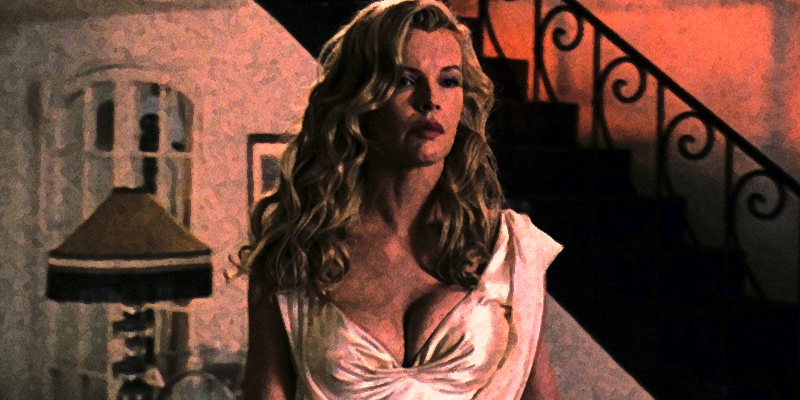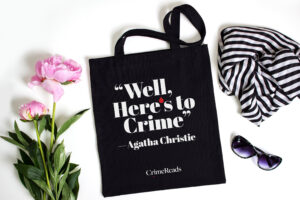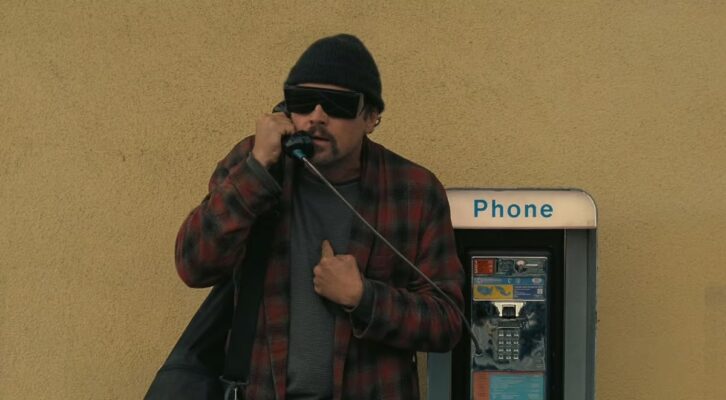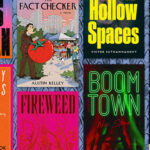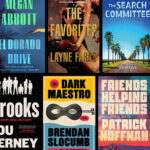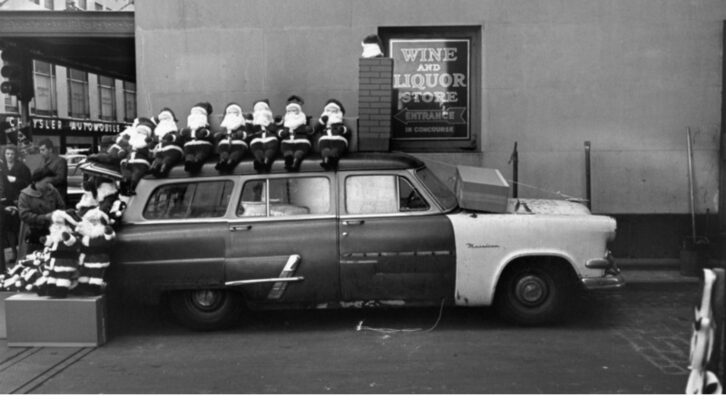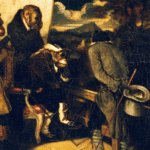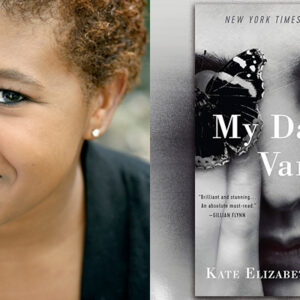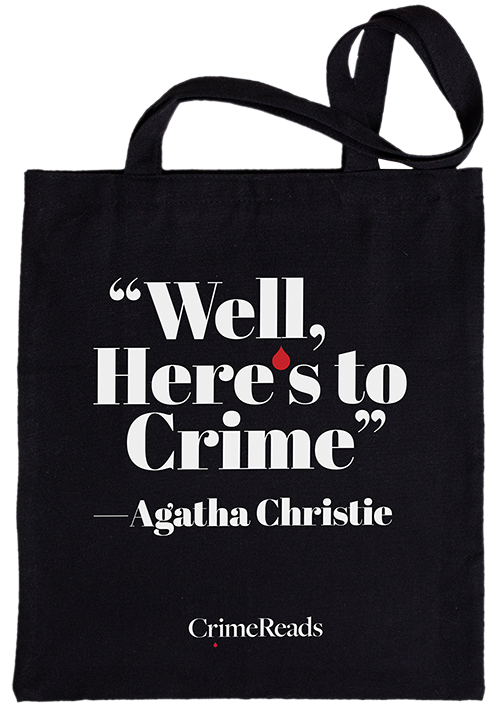There’s nothing better than a vintage mystery or crime story. Sometimes we just want to get away into the past. If it’s the past of shadowy crime tales, either between covers or on screen, even better. We love noir and gangster and heist books and movies. We love the rain-slicked city streets, nattily attired hoods and flashy molls.
But I submit that crime stories produced in contemporary times but set in the past are just as enticing and have the additional benefit of hindsight. Consider “The Godfather,” the brilliant Francis Ford Coppola film released in 1972 but whose story opens in 1945. Or Sue Grafton’s alphabet mysteries, which began in the 1980s and stayed there, right up through her final work, “Y is for Yesterday,” set in 1989 but released in 2017.
Grafton had some strong opinions about research, namely that she did the work and knew her stuff, even decades after the fact.
My opinion about research is also strong: I love it and I spent a ton of time researching not only the early 1980s but the earliest days of the Vietnam War for my 1984-set crime novel That October. Finding just the right historical details—the movies that my teenage protagonists loved, the music videos they watched on MTV, even little things like the red plastic tumblers at Pizza Hut—was a priority for me.
Return with us now to those thrilling days of curling fax paper in this totally not-comprehensive look at crime stories set in the past. I’ll start with one of my favorite examples, which so happens to be one of a few set in vintage Los Angeles.
Two for the road in Los Angeles
Once Upon a Time in Hollywood got a lot of attention at the time of its 2019 release and deservedly so. Directed by the always publicity-provoking Quentin Tarantino, the film stars Brad Pitt, Leonardo DiCaprio and Margot Robbie in Tarantino’s most effective mix of the historic and alternative history, following its movie-industry protagonists through a few days of traveling around Los Angeles in 1969, encountering characters real and reel. The story climaxes on the night of the Tate-LaBianca murders, but Tarantino gives history a welcome rewrite. Anyone who’s seen the film knows this.
But while it might seem counter-intuitive to praise the historical integrity of a film that so deliberately revises historic events, the film gets so much right, from the wide, sunny streets of Los Angeles to the twists and turns of the hills above Hollywood. I’ve never been to a Hollywood party but I think the movie gets that right too. Most of all, the film is a pleasurable cruise through the city and the time, with pop songs and DJ air checks playing over the radio in a convertible. Considering Tarantino made Pulp Fiction and Jackie Brown, it seems astonishing for me to say that Once Upon a Time might be my favorite of his films. Yet here we are.
But I’ll be so bold as to say that there’s another film of the 2010s, another crime film set in the past, that might be better in my eyes, and that’s The Nice Guys. I say better because it’s less an exploration of Hollywood—although it is that—than Once Upon a Time and more a genuine crime film.
Released in 2016 and directed by Shane Black, screenwriter of Lethal Weapon and writer/director of Kiss Kiss Bang Bang, The Nice Guys is steeped in 1977 Hollywood, from the burgeoning porn movie industry, including the last vestiges of actual adult theaters before home video, to private investigators who will be familiar to anyone who enjoyed Jim Rockford and some of his skeezier contemporaries. (There are phone book ads in the movie that scream Rockford.)
Ryan Gosling plays a low-rent private investigator hired to find a woman who stars in porn under the believable-to-the-period moniker Misty Mountains. Gosling’s P.I. runs headlong into a leg breaker (and arm breaker) played by Russell Crowe. The two, bickering the whole time, team up to find another actress, played by Margaret Qualley. The men are helped immeasurably by Gosling’s character’s young daughter, played by Angourie Rice.
The Nice Guys has some of Black’s hallmarks, including scenes set around Christmas, and nudity and violence. There’s funny dialogue and oh my goodness how the movie drips period detail, especially in the polyester shirts and leather jackets. There’s also smog and huge pieces of iron rolling down the freeway, a vibe that it shares with Once Upon a Time as a mystery set in car-focused L.A.
If those two films don’t completely cover your need for throwback crime films set in Los Angeles, you can’t go wrong with L.A. Confidential, the 1997 Curtis Hanson cops-and-corruption film, set in 1953 and based on James Ellroy’s 1990 novel.
Grafton, Whitehead and Mosley take us into the past
A few years ago, I read a quote from Sue Grafton—one that I haven’t been able to find recently—in which she challenged, all but defied, readers to find a mistake in her portrait of the 1980s in her alphabet mysteries.
“I’ve done the research and I’ve got all the details right, so don’t bother looking for mistakes,” she said, in effect.
In a 2009 interview, Grafton noted that research has other benefits besides verisimilitude. “I also find that doing research gives me ideas that I didn’t have before,” she told The Santa Barbara News-Press.
Grafton’s private investigator heroine, Kinsey Millhone, aged only a few years during the course of Grafton’s many novels. With the series’ timeline ending before the 1990s rolled around, Grafton knew she had to be accurate to the period. There’s a lot to admire—and for readers, to enjoy—about her decision to keep Kinsey in her own time and not allow her to drift around in time as Robert B. Parker did with Spenser, who aged gracefully but should be approaching the century mark by now.
Parker didn’t try to limit Spenser, Hawk and Susan Silverman to a timeline and one of the most enjoyable parts of the stories is when Spenser finds himself at a loss to more modern mores.
There’s probably no author writing after-the-fact mysteries who can top Grafton, but Colson Whitehead’s 2010s-era series, “Harlem Shuffle” and “Crook Manifesto,” capture the gritty essence of 1970s-era New York City. It might not be his eye for period detail that won Whitehead the 2017 Pulitzer Prize for Fiction, but the lived-in detail of the world his characters move through creates an indelible impression.
The king of period-set crime fiction might be Walter Mosley, whose novels about post-World War II African American private detective Ezekial “Easy” Rawlins create a world that could have been the best noir film series of all time, as Easy moves through the brutal world of Los Angeles. It remains one of Hollywood’s greatest mistakes that the first of the Easy novels, Devil in a Blue Dress, was the only one made into a film, released in 1995 and starring Denzel Washington as Easy and Don Cheadle as his cohort Mouse.
The game’s afoot—and in the past
There’s no set of mysteries that are more relentlessly adapted decades after their publication than Arthur Conan Doyle’s adventures of Sherlock Holmes and John Watson. Some of the best Conan Doyle adaptations and pastiches continue to appear a century removed from the publication of the original stories.
There’s nothing as cool as seeing Holmes and Watson taking a hansom cab in pursuit of a quarry, and Nicholas Meyer’s 1974 novel The Seven-Per-Cent Solution and its sequel novels, most especially the first, The West End Horror, are indelible period pieces. Meyer’s initial book was likely the first of the Holmes pastiches that I read following my reading of the original canon and stands out as among the best. “Seven-Per-Cent” certainly prompted some outcry over its revisionist take on Conan Doyle’s effort to get rid of his greatest creation.
There’s a lot to be said for Holmes reworkings that are set in modern day, particularly the British “Sherlock” series and “Elementary,” but you absolutely can’t go wrong with period-set Holmes.
Even if Meyer’s books—the first made into a very good film in 1976 – hadn’t set a high-water mark for Holmes revivals, some of the most enjoyable Conan Doyle tributes, follow-ups and imitators came in the decades that followed. Two book series are particular standouts. The peerless Laurie R. King has given us a multi-volume set of adventures of Mary Russell, apprentice to and later wife of the retired consulting detective that kicked off with The Beekeeper’s Apprentice in 1994 and continues to this day. And Nancy Springer writes the long-running Enola Holmes series that are ostensibly YA books but are among my favorite Holmes stories—these featuring the detective’s younger sister —and have prompted two streaming movies.
The King and Springer books benefit from modern-day publication dates that led their authors to make female protagonists the stars of their own stories.
Two of my absolute favorite Holmes imitators came to bookstore shelves in the early 1990s. Mark Frost, who co-created Twin Peaks, published The List of Seven in 1993. (A sequel, The Six Messiahs, was published in 1995.) Frost’s book features Arthur Conan Doyle himself pursuing a mystery that involves Dracula author Bram Stoker and Queen Victoria, and it suggests that a British spy named Jack Sparks was the inspiration for Holmes.
Anno Dracula, written by Kim Newman and released in 1992, takes another look at the same period and some of the same characters and influences in its story, which takes in not only the Queen but characters from Dracula and the Holmes stories as well as real-life figures. Newman has written a time-tripping series set in this alternative history.
Perry Mason and the Case of the Canceled Crime Series
There’s so much good vintage crime drama on TV—if only it could survive.
Perry Mason, the HBO version of Earl Stanley Gardner’s ace defense attorney, sounded like a winner from the start, featuring Matthew Rhys as Mason. The series starts in Mason’s early days when he was a private investigator in 1932 Los Angeles. The series, which debuted in 2020, tells us how Mason got his start and, by the end of the first season of eight episodes, Mason is established as the litigator we came to know with associates Della Street and Paul Drake.
But the series was canceled by HBO after two seasons and 16 episodes.
Another HBO fatality is Duster, an action thriller set in 1972 and featuring Rachel Hilson as a pioneering Black woman in the FBI and Josh Holloway of Lost as a getaway driver working for a crime boss played by Keith David.
The show’s vintage vibe is peerless, with beautiful period cars, Elvis’ blue suede shoes and reclusive million Howard Hughes. The needle drops on the soundtrack are wonderful and that cast—the leads, plus Camille Guaty as Holloway’s character’s ex, Greg Grunberg, Corbin Bernsen and Gail O’Grady—was so much fun to watch.
Canceled by HBO after eight episodes and one season.
Is it possible to be disgruntled about the cancelation of a favorite TV series nearly 40 years later? Of course. I’m still stung over the cancelation of Crime Story, the Michael Mann production that starred Dennis Farina as a tough Chicago cop—a role he had played in real life—and Anthony Denison as a gangster. Their battle plays out in the early 1960s.
Farina and his squad want to bust Dennison’s Ray Luca and even follow him to Las Vegas for a change in series locale. The cast is a dream, from the leads to Stephen Lang as the third party in the show’s trinity as a crusading attorney, Ted Levin, Bill Campbell, Bill Smitrovich, Jon Polito and Darlanne Fluegel.
Canceled by NBC in 1988, after two seasons of 44 episodes.
I haven’t seen any cancelation notice for Lady in the Lake, the Natalie Portman-starring series for AppleTV+ adapted from the great Laura Lippman’s novel. Moses Ingram very nearly steals the series about a classic type of crime story character, a woman caught in a deadly vise.
Lady in the Lake not only gets the “look” of the early 1960s, in costumes and hair, but also the attitudes of racially fraught Baltimore in the day. One scene of a white woman increasingly agitated that Cleo (Ingram) is ahead of her in a phonebooth, really speaks to the time. There’s a lot of prejudice to go around, including attitudes about Portman’s Maddie trying to break into the newspaper business. I hope the series comes back.
Reaching back into the past
In writing That October, I really enjoyed the challenge of writing a story in which the protagonists couldn’t rely on modern-day tools. In 1984, there was no commonly shared Internet, so my characters had to go look at clip files in the “morgue” of the local newspaper.
Without cellphones, how could they keep track of each other on a chaotic Halloween night, as trick or treaters filled the streets and kidnappers tried to recapture their victim? By laboriously searching house parties and alleys. How did news of a tragedy spread? Not by text messages, but by calls between phones hanging on walls in kitchens.
The lack of technology is a throwback story convention that probably doesn’t make anyone long for the 1980s—or 1880s, for that matter. But it adds layers of intrigue and difficulty to solving a mystery.
I mean, how dramatic would The Godfather have been if someone had been able to send a “STAY AWAY FROM THE TOLLBOOTH DUDE” text to Sonny Corleone?

